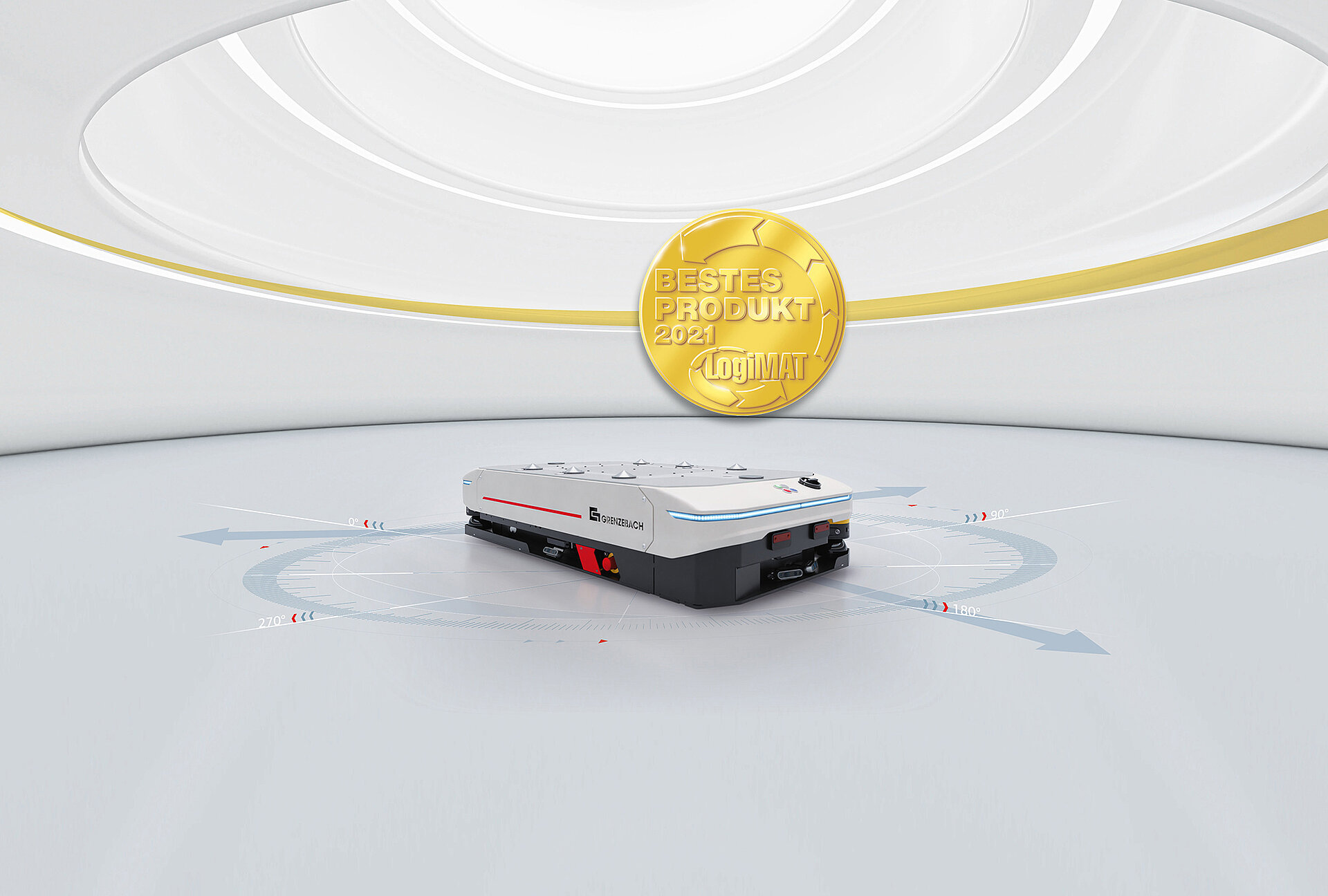Trend: 5G campus network for logistics
- 5G is the fifth generation of mobile network
- An industrial 5G campus network offers the guaranteed processing of data in real-time, without delay
- Automated guided vehicles can be even more autonomous using 5G
HAMLAR/Germany. Intralogistics is experiencing a fundamental transformation as a result of digitalization. Intelligent assistance systems, apps, and other digital solutions will provide answers to today's challenges, such as rising costs and shortages in supply chains. Used correctly, these can raise quality and availability to a new level by ensuring a smooth flow of materials and more flexibility in the long term.
Philipp Marb, Head of Research & Development Intralogistics at Grenzebach, dedicates his day-to-day work to current logistics trends. Since 2010, he has been part of the Grenzebach family and understands the market and the needs of the industry in-depth.
He explains what the recent "5G campus network for industry" trend is all about and what potential he sees in the fifth generation of the mobile network for logistics.
In a nutshell: what is a 5G campus network?
An industrial 5G campus network supplies a defined location, for example company premises, with a secure mobile network based on 5G. The company controls this private network centrally.
Advantages: what does a 5G campus network offer?
Generally speaking, companies can use an industrial campus network to control how the communications network is set up and secured and what equipment is used. In addition, it offers the following other advantages:
- Reliability: The company is responsible for distributing the high bandwidths in the campus network. This ensures reliable connectivity for networked machines and applications.
- Speed: Due to the low latency, real-time communication via radio becomes possible.
- Safety: The network is completely shielded from the outside world, resulting in high data security.
- Device density: Thanks to a high network capacity, many machines and devices can be connected to the network.
Potential: which opportunities does the 5G campus network hold for logistics?
5G could open another door to logistics for a successful smart factory. After all, a fast, efficient flow of materials is essential for the industry. For this reason, storage costs and throughput times must be minimized at all times, and sufficient flexibility and reliable processes must be ensured. We at Grenzebach see potential especially in the last two points. This is because goods can be monitored and controlled in near real-time along the entire supply chain in a 5G network using intelligent sensor technology and additional image- and audio-capable camera systems, which will increase the degree of automation of the entire supply chain.
Application: how could 5G be applied explicitly in practical intralogistics?
Real-time monitoring allows, for example, to detect disruptions at an early stage and to reduce them to a minimum. For example: The paths for autonomous vehicles are often clearly defined. Based on these paths, the fleet manager calculates an optimal route. If an object or person blocks that vehicle route, a 5G campus network will transmit sensor and image data almost instantaneously. In this process, the data collected by the vehicle is transmitted in combination to the fleet manager in milliseconds and then evaluated by it. This data is the basis for calculating an alternative route for Automated Guided Vehicles (AGV).
Tip: each company has different requirements and environmental conditions, so each company must decide individually which communication standard to use. Whichever way you choose, you can rely on Grenzebach. Both hardware and software solutions, as well as peripherals, are designed for a wide range of networks and environments.
Do you have any questions? Call us, e-mail us. We are looking forward to hearing from you.



